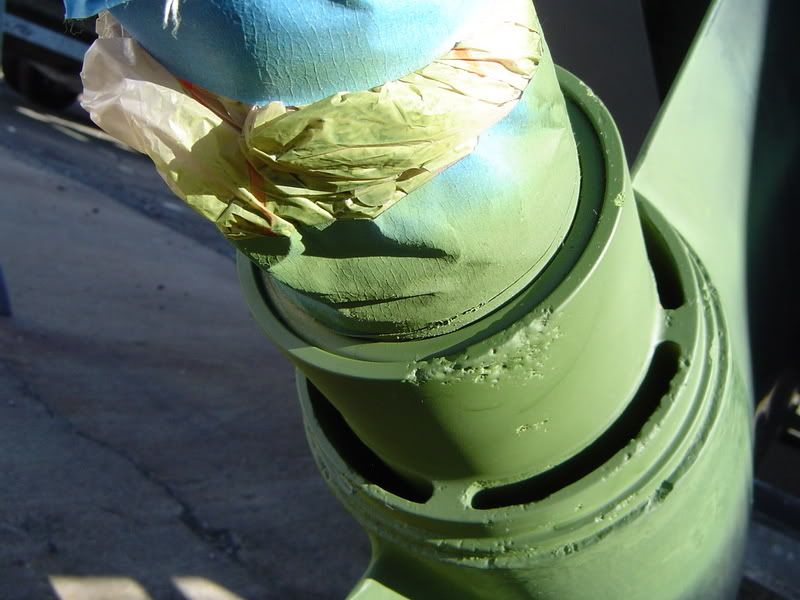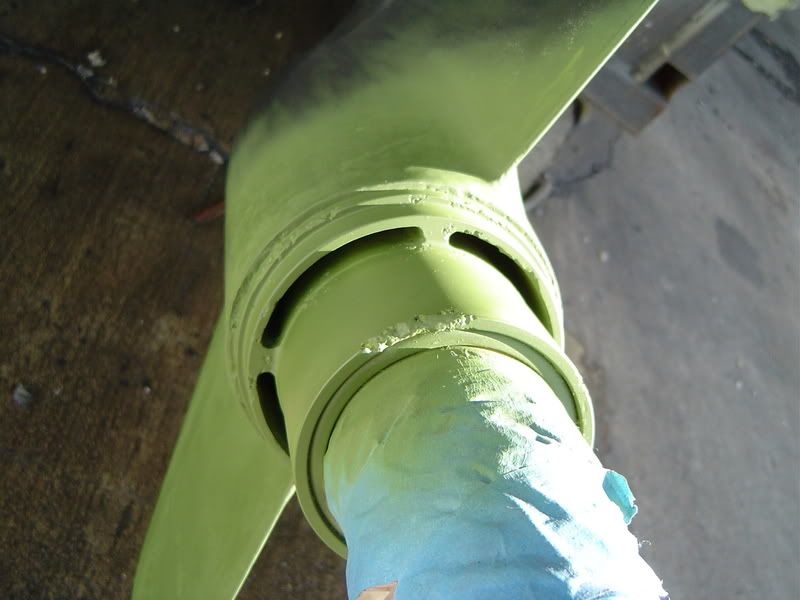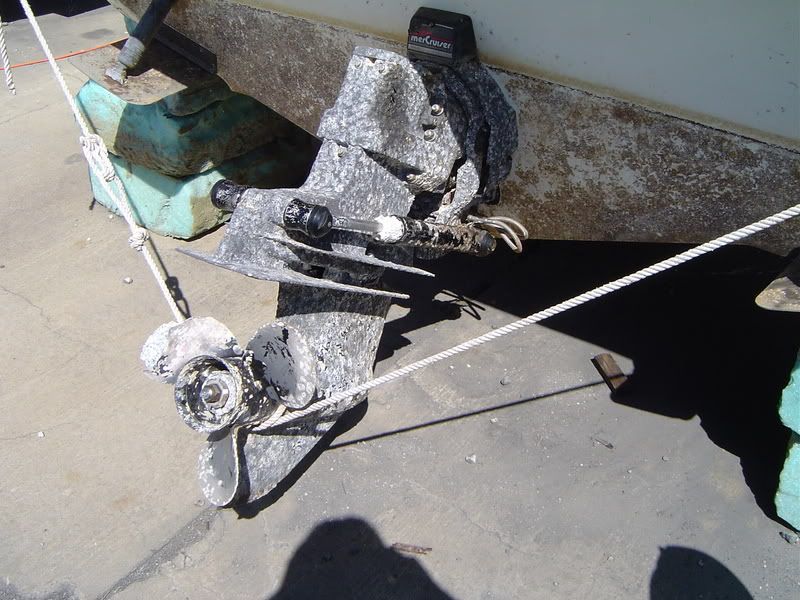The boat was hauled out today and so began my ritual of cleaning and painting the out drive. We have a lot of corrosion issues everywhere on our lake even though it is a fresh water lake. My boat is normally in the water year round although it did sit out a few months this past winter due to low water levels. Happily the addition of a heavy duty (red) Mercathode Controller and extra anode buttons on either side of the outdrive do a very respectable job keeping the corrosion to a minimum and concentrated primarily around the prop hub with a small amount of corrosion on the lower tip of the skeg. I was very pleased with what I saw at todays haul out but then I discovered something that I did not like at all so I thought I would bring it up here.
When I removed the props I noticed that bearing carrier had corrosion on it too. The carrier is hidden by the rear prop so I was quite surprised by this. Plus it appears to be bronze in color which was equally baffling in terms of why it might be corroding. So I asked one of the service techs about it and he said it is aluminum. :wow: The annodizing color just makes it look like bronze. (He also told me the carriers on Sea Core drives are stainless.) Anyways I guess this annodizing coating is not as good as one might expect. I was equally shocked at how much the corrosion had eaten into the bearing carrier too. I also found an article on Boat US that explains what Mercury does with the carrier.
According to a marine corrosion expert and metallurgist now retired from Mercury Marine, there's no anode on the bearing carrier on pre-2000 Bravo III models "because there's no room." The drive shaft areas on Alpha and all Bravo sterndrives are identical but the twin propellers on Bravo IIIs take up more space. Dale Pluhar, now an independent marine consultant, explained that Mercruiser’s response was to counteract corrosion by coating the aluminum carrier with chromate material to prevent corrosion. Merc also issued a new prop shaft bearing that creates a better watertight seal and they added a second anode to the Bravo III's cavitation plate. These new parts first became available in December 2000 and in the spring of 2001
Anyways, I cleaned it up the best I could and then sprayed it with zinc chromate primer just like I did with the drive housing itself. Tomorrow it gets a coat of phantom black as well.
So if you have corrosion issues pull your props too when painting your drive and check the bearing carrier housing for signs of corrosion. I'll be keeping a close eye on mine and will try and take a few pictures tomorrow so you can see the the corrosion.
Dave
When I removed the props I noticed that bearing carrier had corrosion on it too. The carrier is hidden by the rear prop so I was quite surprised by this. Plus it appears to be bronze in color which was equally baffling in terms of why it might be corroding. So I asked one of the service techs about it and he said it is aluminum. :wow: The annodizing color just makes it look like bronze. (He also told me the carriers on Sea Core drives are stainless.) Anyways I guess this annodizing coating is not as good as one might expect. I was equally shocked at how much the corrosion had eaten into the bearing carrier too. I also found an article on Boat US that explains what Mercury does with the carrier.
According to a marine corrosion expert and metallurgist now retired from Mercury Marine, there's no anode on the bearing carrier on pre-2000 Bravo III models "because there's no room." The drive shaft areas on Alpha and all Bravo sterndrives are identical but the twin propellers on Bravo IIIs take up more space. Dale Pluhar, now an independent marine consultant, explained that Mercruiser’s response was to counteract corrosion by coating the aluminum carrier with chromate material to prevent corrosion. Merc also issued a new prop shaft bearing that creates a better watertight seal and they added a second anode to the Bravo III's cavitation plate. These new parts first became available in December 2000 and in the spring of 2001
Anyways, I cleaned it up the best I could and then sprayed it with zinc chromate primer just like I did with the drive housing itself. Tomorrow it gets a coat of phantom black as well.
So if you have corrosion issues pull your props too when painting your drive and check the bearing carrier housing for signs of corrosion. I'll be keeping a close eye on mine and will try and take a few pictures tomorrow so you can see the the corrosion.
Dave







